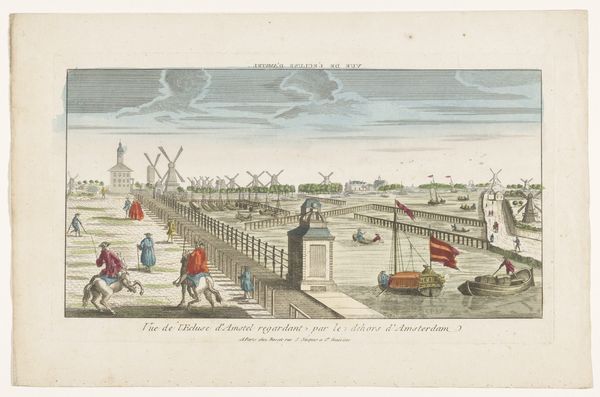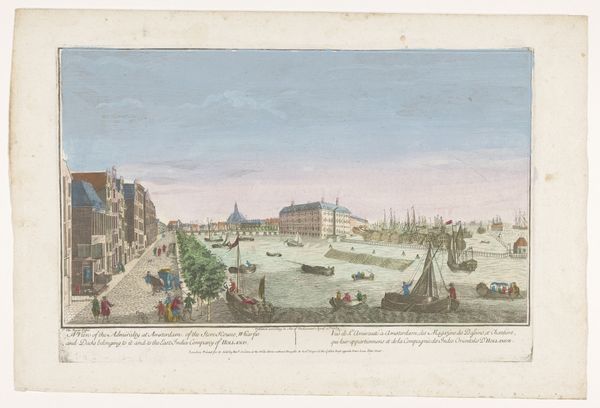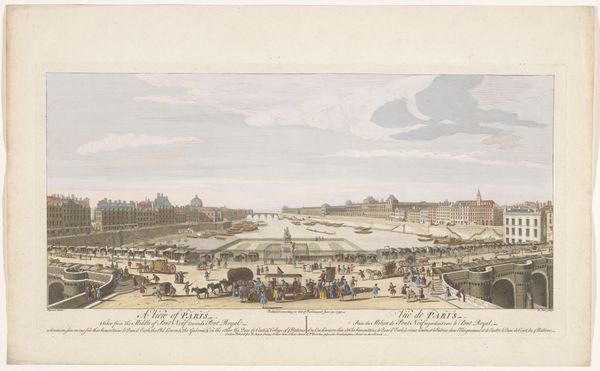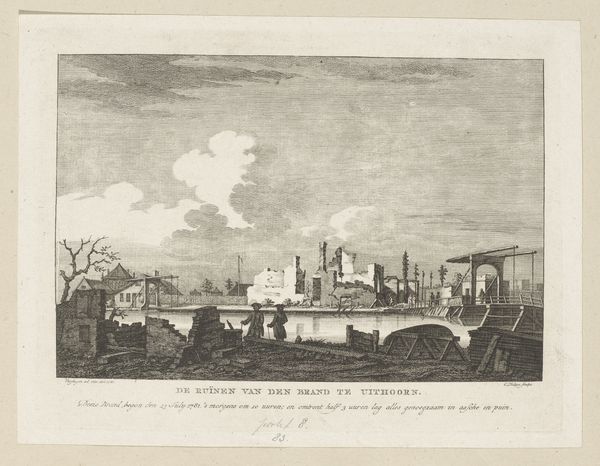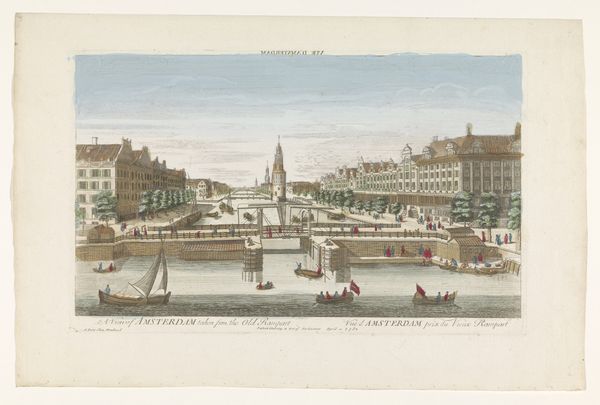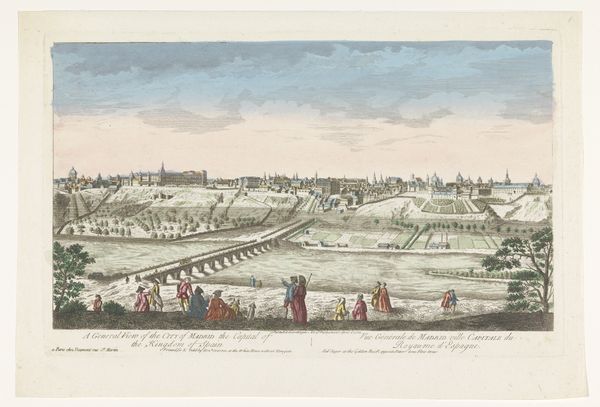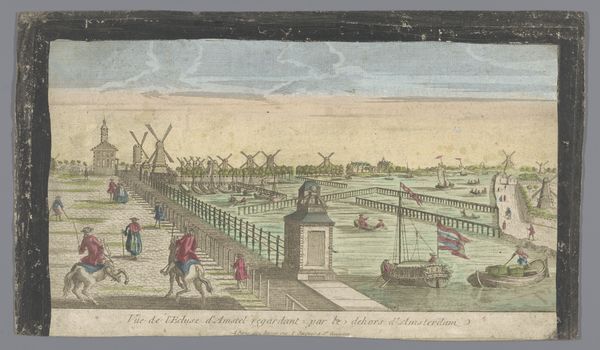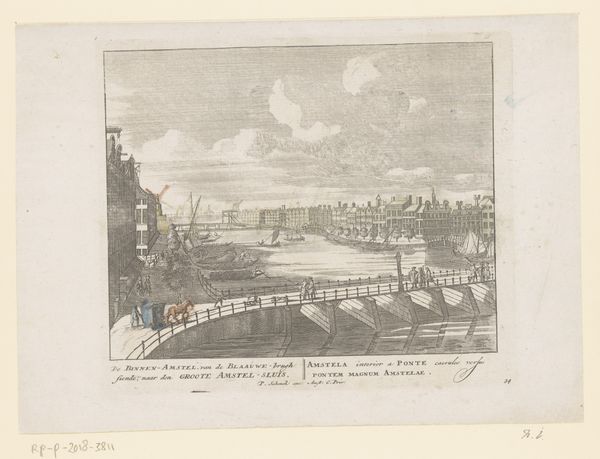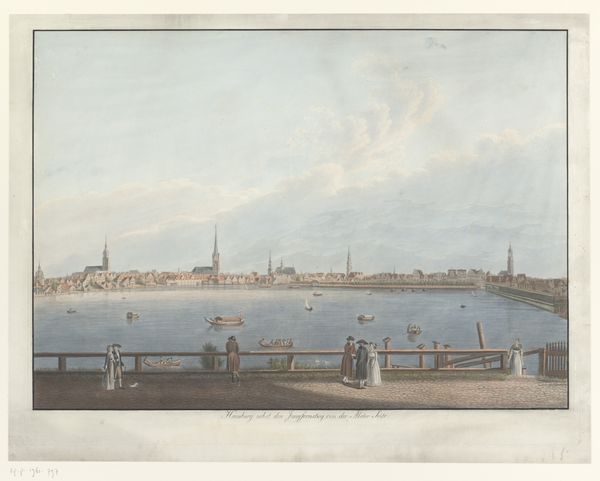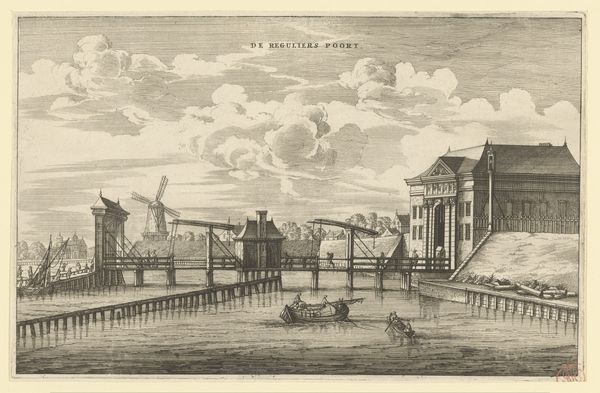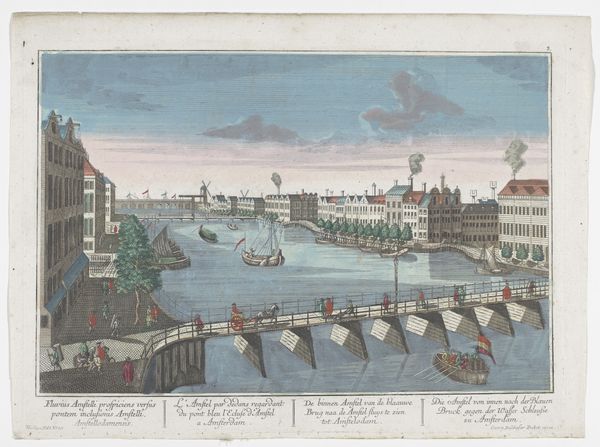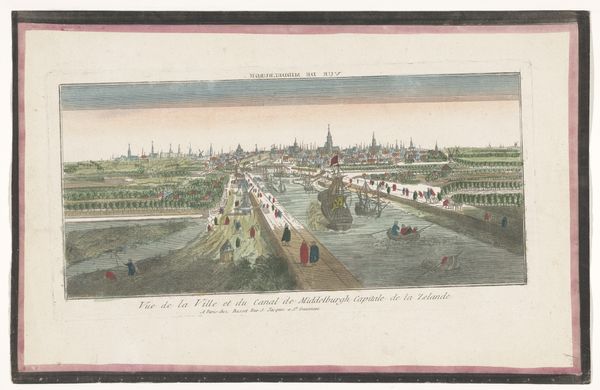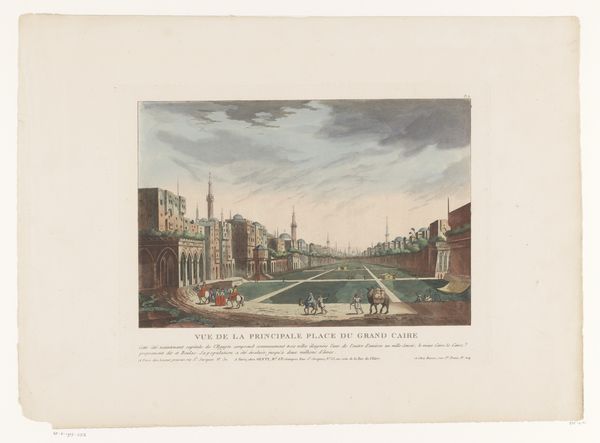
Gezicht op een brug en een rij vlaggen van verschillende boten te Cochin-China 18th century
0:00
0:00
print, watercolor, engraving
#
water colours
# print
#
landscape
#
watercolor
#
coloured pencil
#
orientalism
#
genre-painting
#
engraving
#
watercolor
Dimensions: height 307 mm, width 431 mm
Copyright: Rijks Museum: Open Domain
Curator: We’re looking at “View of a bridge and a row of flags of different boats in Cochin-China” from the 18th century. What strikes you first? Editor: Well, there's a dreamlike quality here, isn't there? It’s gentle and airy, yet it also feels strangely formal with that orderly procession of flags. Like a watercolor reverie… or maybe it’s like peering into a miniature theater set. Curator: Interesting you pick up on that formality because the artist used printmaking techniques like engraving, alongside watercolors. I'm drawn to how those techniques might affect the image’s overall material impact. We’re meant to view this not as a document but rather an artist’s construction… or a colonial construction! Editor: Colonial for sure, but I read it more generously! All of those little flags...they're practically humming. The artist clearly reveled in the colors, in how each pennant catches the wind, each building casts a delicate shadow. Curator: And the repetition of the houses, and those meticulously rendered flags... each element points towards a calculated observation—a world neatly cataloged. Editor: See, I felt more invitation than "cataloging." Take that bridge: it has tiny figures crossing it. There's a sense of narrative being created through daily human interaction. It draws you in, asking you to participate. Curator: And yet, it’s precisely that ‘participation’ that must have been unavailable. To view this is to understand this place through a very particular—and likely mediated—lens. How could they understand local materials and labor so readily from a remove? Editor: Fair enough, fair enough. It's a bit like observing an ant farm, now that you mention it, carefully curated behind glass. Except this "ant farm" is somebody’s livelihood, culture. Curator: It also puts the contemporary issue of extraction front and center. How much do we consume in the art world without fully acknowledging the making or, in this case, the origins? Editor: It’s true, it's easy to fall under the artwork’s subtle spell—the soft colours and that strange feeling that this world existed only in dreams. Yet that spell is built upon someone else's concrete experience. Food for thought.
Comments
No comments
Be the first to comment and join the conversation on the ultimate creative platform.
